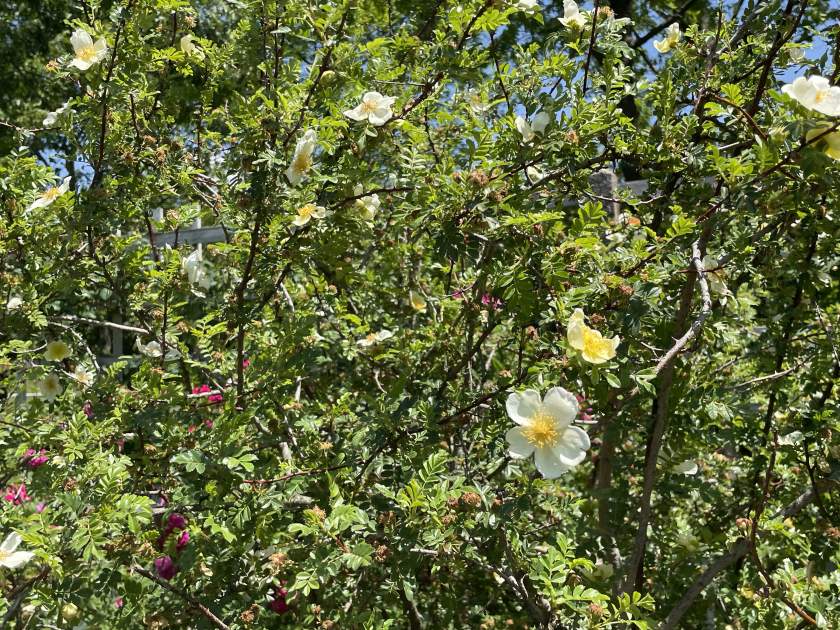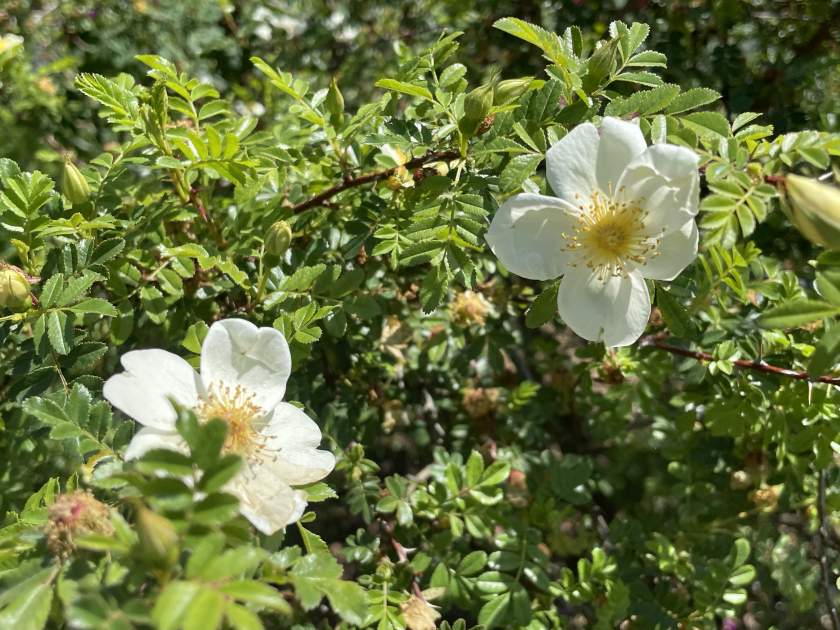Fragrant Beauty: Discover the Incense Rose, Rosa Primula
The Incense Rose, also known as Rosa Primula, is a captivating and fragrant shrub rose that delights garden enthusiasts with its early bloom and delicate charm. Originating from China and Turkestan, this species rose and has gained popularity for its fern-like foliage, which emits a mesmerizing fragrance that lingers in the air. In this article, we will explore the characteristics of the Incense Rose, its cultivation requirements, and tips for propagation. Whether you’re a seasoned gardener or a budding enthusiast, the Incense Rose is sure to add beauty and elegance to your garden.
Background and Family Origin:
Incense RoseThe Incense Rose, or Rosa Primula, was discovered in China and Turkestan. Although the specific details of its discoverer or publisher are unknown, this remarkable species rose has captured the hearts of many gardeners worldwide. It belongs to the family of wild roses or Rosaceae family, known for its diverse range of species and captivating blooms.
Characteristics: The Incense Rose exhibits several distinctive characteristics that make it a prized addition to any garden. Its leaves, similar to Rosa foetida, are double-serrated and glandular, giving them a fern-like appearance. The foliage emits a delightful fragrance that earns this rose its alternative name, the Incense Rose. The flowers, blooming in late spring, are small, cupped, and primrose yellow in color (approximately 3 cm or 1.2 inches in diameter).
With a diameter of approximately 3 cm (1.2 inches), these dainty blooms exude a medium musky fragrance. Following the flowering season, small reddish-brown hips develop, adding an additional touch of visual interest. It grows gracefully and arches, reaching a height of 150-180 cm (5-6 feet) and a width of 90-120 cm (3-4 feet) when fully matured. The combination of its fragrant foliage, charming flowers, and elegant growth habit make the Incense Rose a captivating choice for any garden.
Cultivation of Incense Rose:
Sunlight: Full Sun for Optimal Growth To ensure the Incense Rose thrives, it requires ample sunlight. Plant it in a location that receives full sun, providing at least six hours of direct sunlight each day. This will promote vigorous growth and abundant flowering.
Watering: Regular Watering, Particularly in the First Year During the initial year after planting, the Incense Rose requires regular watering to establish its roots. Ensure the soil remains evenly moist, but not waterlogged. As the plant matures and becomes more established, it becomes more tolerant of drought conditions. However, it is advisable to water it during extended periods of dry spells to maintain its vitality.
Soil: Well-Drained and Fertile Soil The Incense Rose thrives in well-drained soil that is rich in humus. Ensure the soil provides adequate drainage to prevent waterlogging, as excessive moisture can lead to root rot. Incorporating organic matter into the soil, such as compost or well-rotted manure, can enhance its fertility and drainage capabilities.
Pest and Disease Management: Fortunately, the Incense Rose is not highly susceptible to pests or diseases. However, it’s important to monitor the plant for any signs of infestation or disease. Common pests that may attack the Incense Rose include aphids, spider mites, and scale insects. If detected, promptly remove them by hand or apply insecticidal soap or neem oil to control their population.
To prevent diseases such as rose black spots and powdery mildew, it’s essential to water the plant at the base, avoiding wetting the leaves. Additionally, applying a fungicide in early spring and late fall can help prevent these diseases from taking hold.
Propagation of Incense Rose:
There are several methods for propagating the Incense Rose, allowing gardeners to expand their collection or share the beauty of this rose with others.
Hardwood Cuttings: Autumn Propagation To propagate through hardwood cuttings, select healthy, mature growth from the Incense Rose during late autumn. Cuttings should be approximately 15 cm (6 inches) long and possess at least three nodes. Dip the base of the cuttings in a rooting hormone and plant them in a well-draining potting mix. Keep the mix consistently moist and place the cuttings in a warm, sunny location. Within 6-8 weeks, the cuttings should develop roots, indicating successful propagation.
Chip Budding: Summer Propagation Another propagation method is chip budding, which takes place during summer. Make a T-shaped incision in the bark of a healthy, mature branch and insert a chip of wood from a desired variety of Incense Rose into the incision. Secure the chip in place with grafting tape or rubber bands. Within 6-8 weeks, the chip should take root, resulting in a new Incense Rose plant.
Additional Care Tips:
Here are some additional care tips to help you maintain the health and beauty of your Incense Rose:
- Pruning: Perform pruning in late winter or early spring to remove any dead or damaged wood. This will encourage new growth and maintain the overall shape of the plant.
- Fertilization: Apply a balanced fertilizer once in spring to provide essential nutrients for optimal growth and blooming.
- Container Gardening: The Incense Rose can be grown in containers; however, it will require repotting every year or two. When repotting, use a well-draining potting mix and select a pot that is one size larger than the current one.
By following these cultivation and care guidelines, you can enjoy the beauty and fragrance of the Incense Rose in your garden for years to come. Its graceful growth, fragrant foliage, and charming yellow blooms will undoubtedly enchant both you and the visiting pollinators.





